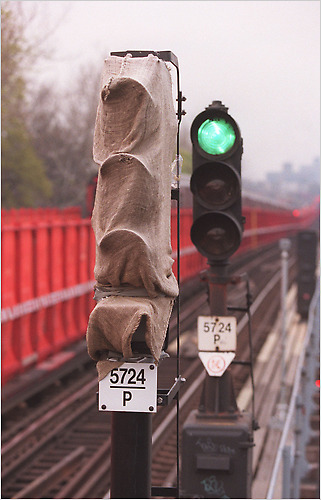
Has your subway been delayed recently? Blame New York City's aging transit infrastructure, especially its outdated signal system. Then start fighting to make sure Albany fully funds the MTA's next capital plan.
A new report from the Straphangers Campaign shows just how prevalent signals failures are on the subway system. In 2011, the MTA sent out 4,580 e-mail and text message alerts informing riders of significant delays on the subway system (in general, these are delays of ten minutes or more; see the whole methodology in this PDF). Straphangers deemed around 3,000 of those under the MTA's control, letting the agency off the hook for things like police investigations or water main breaks. Over a third, 1,062, were related to signals.
It's perhaps no surprise that signals, which tell train operators when to stop and when to go, are causing delays across the system. They're ancient. As of two years ago, a quarter of the system's signals were more than 70 years old, according to New York City Transit chief engineer Fredrick Smith.
The good news is that the MTA has identified upgrading the subway system's signals as a top priority. “It’s about signals,” MTA chief Joe Lhota told City And State last month. “If we’re going to have more throughput, we’re going to put more trains on the same track, and we’re going to have to have more modernized signals.”
The bad news is that upgrading signals is expensive work -- the MTA is spending over $3 billion on New York City Transit signals and communications work in its current capital program -- and there's no plan yet for how to fund the next capital plan. The debt-saddled authority can't afford to borrow billions, like Governor Cuomo did for the current round of spending, and put the next five years of upgrades and repairs on a credit card.
Some revenue stream, whether Sam Schwartz's toll plan, James Brennan's transportation bond issue, or Lhota's own suggestion of a sales tax, will be needed. Otherwise, those signals are just going to get worse and the delays more frequent.
This is the first year that Straphangers has collected this data, which is also broken down by line and borough, but in the future it will also allow riders to measure changes in the reliability of the subway system over time.





